Affiliate links on Android Authority may earn us a commission. Learn more.
Spec showdown: Samsung Galaxy A8 series vs Galaxy A7 and A5
Published onDecember 21, 2017
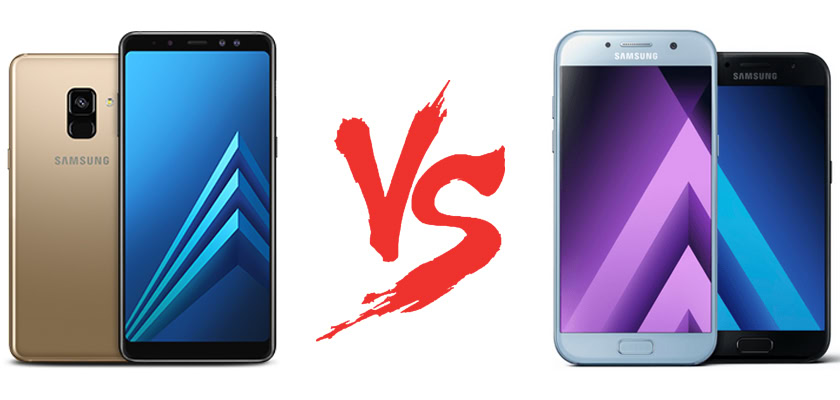
Do Samsung’s latest smartphones offer a lot more in terms of specs, or are are they only modest upgrades? Which one should you get? Let’s take a look.
Specs comparison
The Galaxy A8 and A8 Plus are similar smartphones. Not only do they look identical, they also have virtually the same specifications, with a few exceptions. The main difference is display size. The Plus model comes with a 6-inch screen, while its little brother features one that measures 5.6 inches. Both offer Full HD+ resolution and have an 18.5:9 aspect ratio.
The A8 Plus has a larger battery—3,500 mAh compared to the A8’s 3,000 mAh—and comes with 4 or 6 GB of RAM. The A8 only has 4 GB onboard. Other than that, they are identical.
They are powered by the Exynos 7885 chipset, have 32 or 64 GB of expandable storage, and are IP68 rated for protection against water and dust. They sport a 16 MP primary camera with an f/1.7 aperture and phase-detection auto-focus. What makes them stand out is the dual-camera setup on the front with 16 and 8 MP sensors, allowing for bokeh-enhanced selfies.
The Galaxy A8 smartphones run Android 7.1 Nougat but should upgrade to Oreo in the near future. They have a headphone jack onboard, as well as a fingerprint scanner that’s located on the back. They even support Samsung Pay.
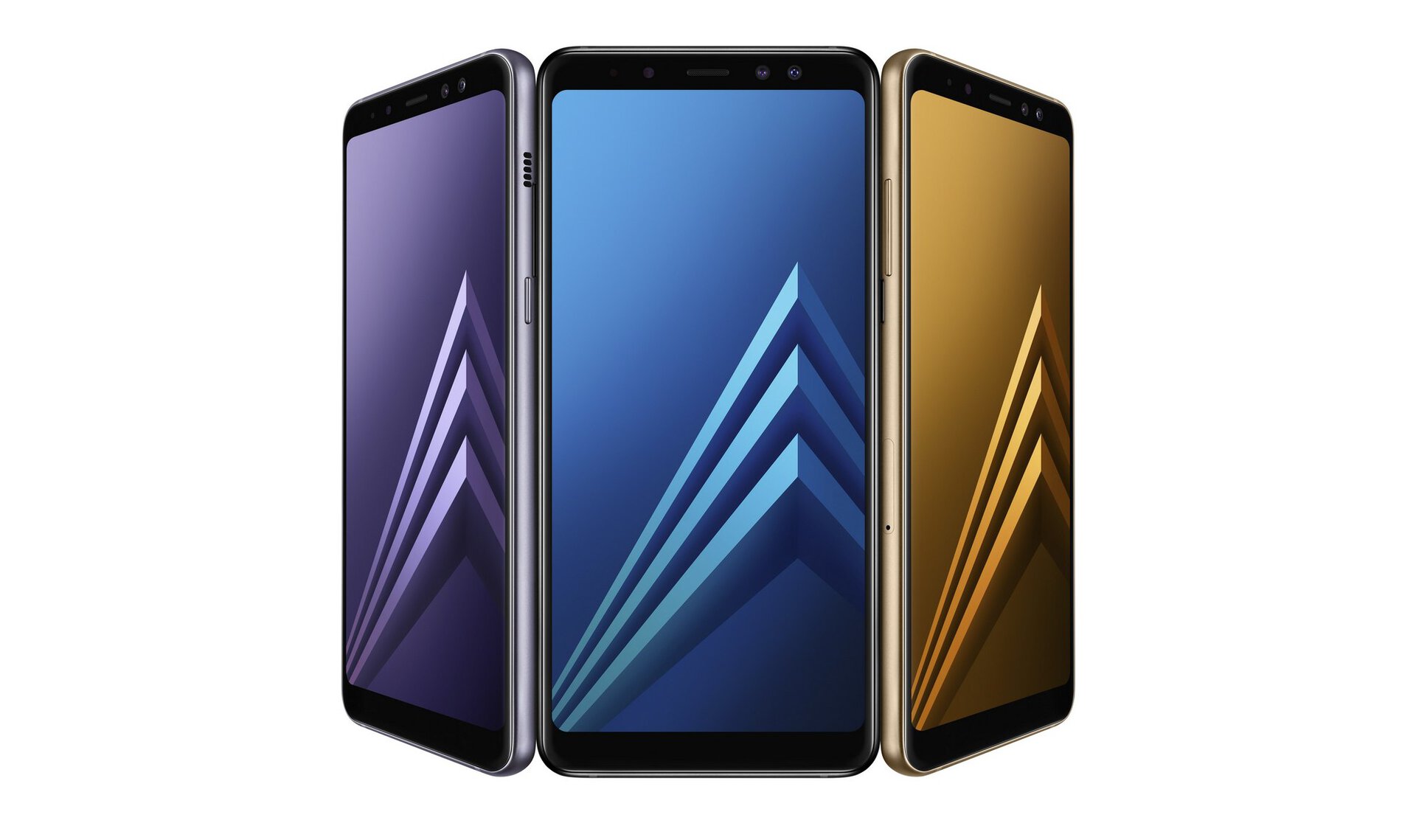
How do these specs compare with the phones’ predecessors? The Galaxy A7 and A5 have 5.7- and 5.2-inch screens with Full HD resolutions, making them smaller than those of the A8 series. The devices still have roughly the same footprint because of their larger bezels. They’ve got 16:9 aspect ratios too, which can either be a good or a bad thing depending on your preference.
The Galaxy A7 and A5 come with a slightly older Exynos 7880 chipset under the hood along with 3 GB of RAM—1 or 3 GB less than the A8 series. They only feature a single front-facing camera (with a 16 MP sensor), so you won’t be able to capture those fancy bokeh images.
The primary camera also boasts a 16 MP sensor, with an f/1.9 aperture. It probably won’t perform as well as the one on the A8 series in low-light conditions, but we’ll until we review the devices to know for sure.
The Galaxy A7 has a slightly larger battery than the Galaxy A8 Plus at 3,600 mAh (+100 mAh), while the A5 retains the 3,000 mAh capacity of its successor. Both smartphones are also IP68 rated, meaning they’ll survive in up to 5 feet of water (1.5 meters) for 30 minutes.
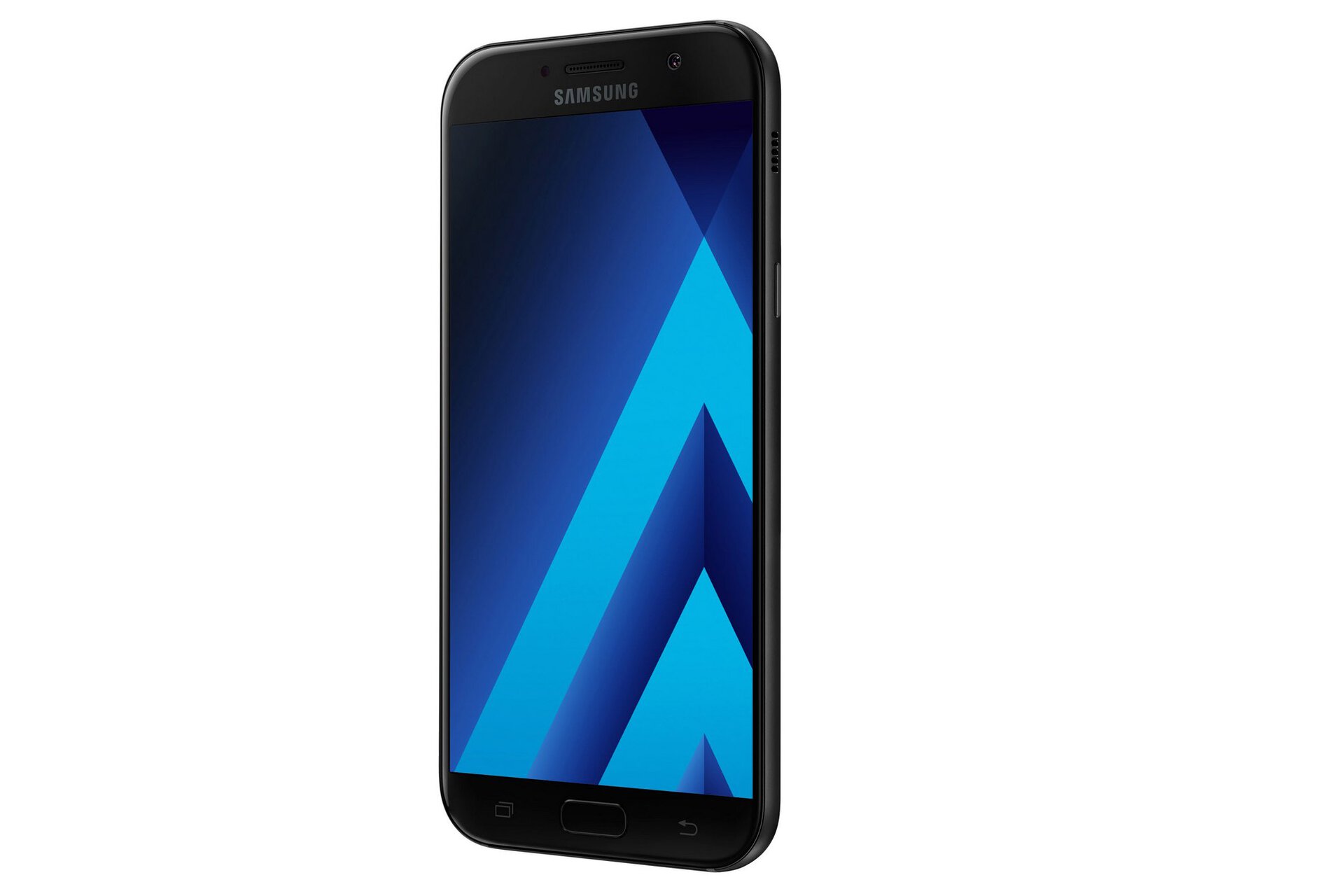
They ship with Android 6.0.1 Marshmallow on board, but don’t let that scare you away. The Nougat update is already available, and both handsets will be bumped up to Oreo in the future.
Both the A5 and A7 have 32 GB of storage, which can be expanded up to 256 GB. Both also have a headphone jack and a front-mounted fingerprint scanner. They also support Samsung Pay .
| Samsung Galaxy A8 Plus | Samsung Galaxy A7 | Samsung Galaxy A8 | Samsung Galaxy A5 | |
|---|---|---|---|---|
Display | Samsung Galaxy A8 Plus 6-inch FHD+ Super AMOLED 2,220 x 1,080 resolution 412 ppi 18:5:9 aspect ratio | Samsung Galaxy A7 5.7-inch FHD Super AMOLED 1,920 x 1,080 resolution 386 ppi 16:9 aspect ratio | Samsung Galaxy A8 5.6-inch FHD+ Super AMOLED 2,220 x 1,080 resolution 441 ppi 18:5:9 aspect ratio | Samsung Galaxy A5 5.2-inch FHD Super AMOLED 1,920 x 1,080 resolution 424 ppi 16:9 aspect ratio |
Processor | Samsung Galaxy A8 Plus Exynos 7885 | Samsung Galaxy A7 Exynos 7880 | Samsung Galaxy A8 Exynos 7885 | Samsung Galaxy A5 Exynos 7880 |
RAM | Samsung Galaxy A8 Plus 4/6 GB | Samsung Galaxy A7 3 GB | Samsung Galaxy A8 4 GB | Samsung Galaxy A5 3 GB |
Storage | Samsung Galaxy A8 Plus 32/64 GB Expandable up to 256 GB | Samsung Galaxy A7 32 GB Expandable up to 256 GB | Samsung Galaxy A8 32/64 GB Expandable up to 256 GB | Samsung Galaxy A5 32 GB Expandable up to 256 GB |
Cameras | Samsung Galaxy A8 Plus Rear camera: 16 MP sensor with f/1.7 aperture, phase-detection auto-focus, video digital image stabilisation (VDis) technology, hyperlapse, and Food Mode Front camera: 16 MP + 8 MP sensor with f/1.9 aperture and Live Focus | Samsung Galaxy A7 Rear camera: 16 MP with f/1.9 aperture, autofocus, and LED flash Front camera: 16 MP with f/2.0 aperture | Samsung Galaxy A8 Rear camera: 16 MP sensor with f/1.7 aperture, phase-detection auto-focus, video digital image stabilisation (VDis) technology, hyperlapse, and Food Mode Front camera: 16 MP + 8 MP sensor with f/1.9 aperture and Live Focus | Samsung Galaxy A5 Rear camera: 16 MP with f/1.9 aperture, autofocus, and LED flash Front camera: 16 MP with f/2.0 aperture |
3.5 mm headphone jack | Samsung Galaxy A8 Plus Yes | Samsung Galaxy A7 Yes | Samsung Galaxy A8 Yes | Samsung Galaxy A5 Yes |
Battery | Samsung Galaxy A8 Plus 3,500 mAh Non-removable | Samsung Galaxy A7 3,600 mAh Non-removable | Samsung Galaxy A8 3,000 mAh Non-removable | Samsung Galaxy A5 3,000 mAh Non-removable |
IP rating | Samsung Galaxy A8 Plus IP68 | Samsung Galaxy A7 IP68 | Samsung Galaxy A8 IP68 | Samsung Galaxy A5 IP68 |
Software | Samsung Galaxy A8 Plus Android 7.1 Nougat | Samsung Galaxy A7 Android 6.0.1 Marshmallow | Samsung Galaxy A8 Android 7.1 Nougat | Samsung Galaxy A5 Android 6.0.1 Marshmallow |
Dimensions and weight | Samsung Galaxy A8 Plus 159.9 x 75.7 x 8.3 mm 191 g | Samsung Galaxy A7 156.8 x 77.6 x 7.9 mm 186 g | Samsung Galaxy A8 149.2 x 70.6 x 8.4 mm 172 g | Samsung Galaxy A5 146.1 x 71.4 x 7.9 mm 157 g |
Which one is right for you?
Should you opt for one of the A8’s or their predecessors ? It depends. Without a doubt, the A8 series offers more. They have a so-called bezel-less design, larger 18.5:9 display, faster chipset, up to 3 GB of RAM more, and twice the storage, depending on the model. Let’s not forget the dual front-facing cameras. If you’re looking for the latest and greatest Samsung mid-range handset, the choice is clear.
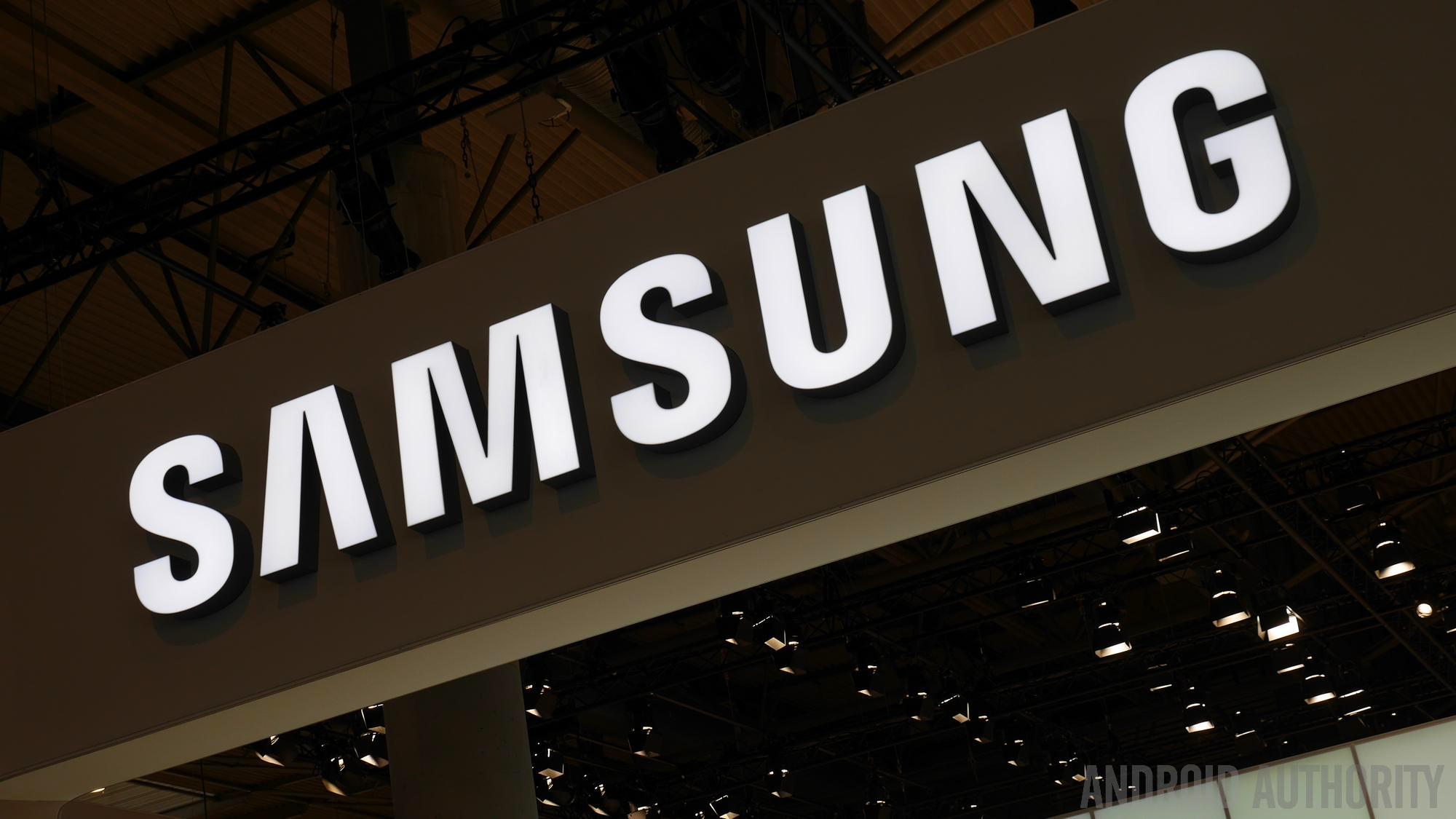
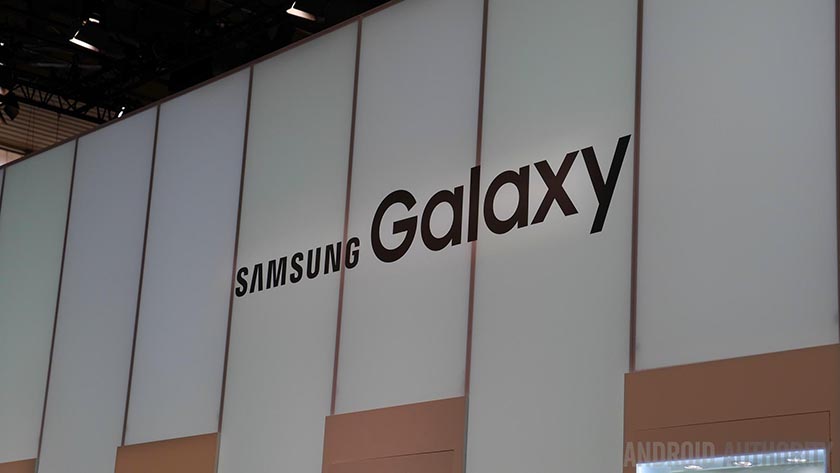
The Galaxy A7 and A5 are still great devices. They feature a slightly older chipset and “only” 3 GB of RAM, but they still have enough power under the hood for the average user. They might only have a single camera on the front and have larger bezels, but they should be more affordable than their successors—making them great options for those looking to save some money.
Which device would you consider getting? Let us know in the comments.